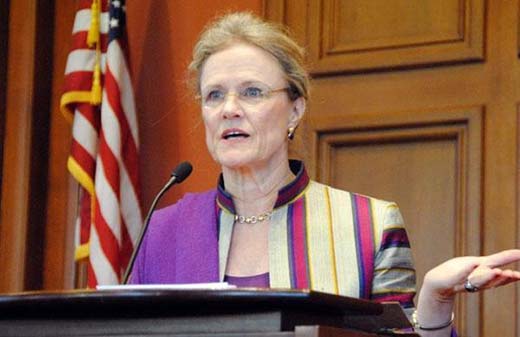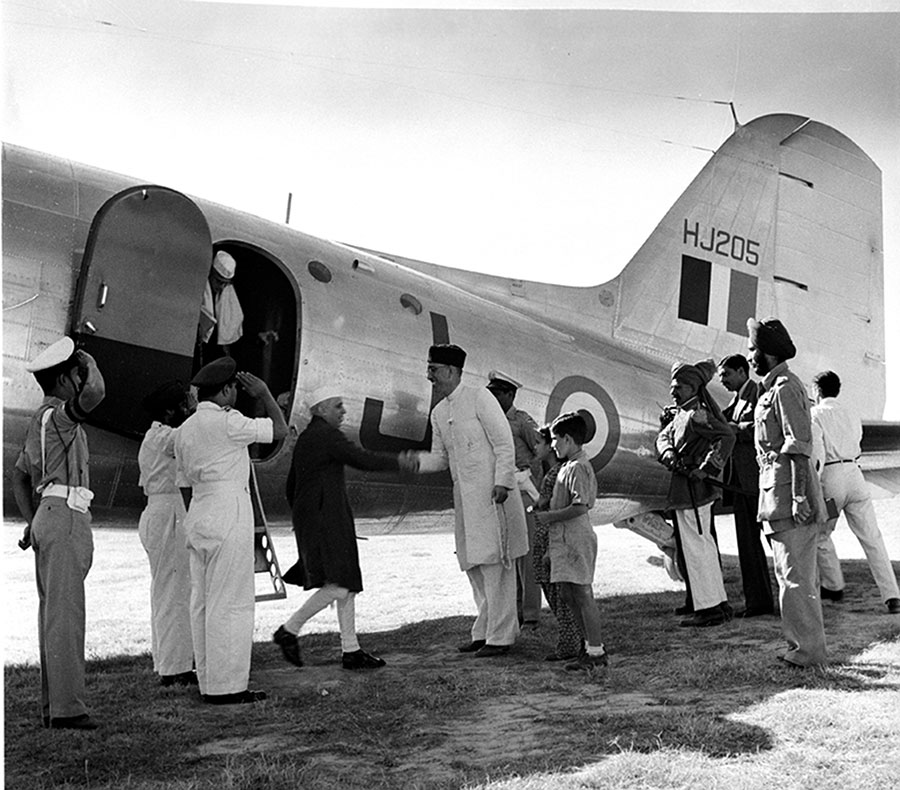Wikileaks is driving news across the globe and in the subcontinent. It leaked a Congressional Research Service Report (RL31587) of September 2002 in February 2009. Sara Wani reports how US Foreign Affairs analyst Kaia Leather described Kashmir conflict to the lawmakers of world’s only superpower.
In its very introduction the report, Kashmir Separatists: Origins, Competing Ideologies, and Prospects for Resolution of the Conflict, suggests the presence of multiple stakeholders and their differing ideologies are one of the major impediments to resolution of the conflict. “The complicated politics of the underlying uprising and the vast number of interested parties to the dispute, however, have often frustrated the efforts of US leaders in the region,” the report says.

The report offers a glimpse of how US’s Kashmir policy shifted post 9/11 and how US officials from Delhi embassy travelled to Srinagar to urge the moderate Kashmiri leaders to participate in 2002 election, “thus supporting a key Indian goal in resolving the uprising”.
The report informs the US lawmakers that December 13, 2001 attack on Indian Parliament was orchestrated by Jaish-e-Mohammad militant group (having al Qaeda links) to escalate tension in the region, forcing Pakistan to lower its guard on its border with Afghanistan “just as top al Qaeda leaders were attempting to escape from the conflict with the US troops at Tora Bora”. It also suggests that al Qaeda leaders may have used “parts of Kashmir to hide from Pakistani and US forces”.

Discussing the history of the dispute the report holds Abdullah’s responsible. It says the “renunciation of independence” by the family “at the stage for a grass roots movement among Kashmiri people which turned into violent uprising in December 1989”. The report does not leave NC at that. It even accuses the party (then in power) of preventing a way out. The “ruling Kashmiri National Conference Party….has often shown resistance to India’s efforts to negotiate with these (moderate) leaders and has recently arrested some of them under Indian anti-terrorism laws”. Report maintains that US analysts see these leaders “as the key to negotiated settlement between India and Pakistan over Kashmir”.
The report considers the 1989 uprising as indigenous but firmly believes that Pakistan’s ISI played a key role in directing it by launching Hizb ul Mujahideen under Syed Salahuddin to counter “staunchly secular” JKLF (Jammu Kashmir Liberation front). It also makes us believe that even Salahuddin’s HM fell from grace as Pakistan feared that he may not support accession of Kashmir to Pakistan and started backing Pakistani based militant groups in order to ensure that their allegiances were for Kashmir’s accession to Pakistan. Many of these groups, the report believes, have “reportedly ties with the Taliban and funding from al Qaeda leaders in Afghanistan”. Snapping of ties between Jamat-e-Islami and HM in 1998, according to report, prompted the “remaining members to work more closely with foreign (Pakistani and Middle Eastern ‘guest militants’) organised in Pakistan.”
It describes the “Independence movement” as “characterised from its very inception, by crippling internal conflicts of ideology and personal rivalries” though it began with “a nationalist vision of the state as a region with a strong ethnic identity that unites Kashmiris across international and religious lines”. The report categorises the separatist elements into three groups; influenced by differing ideologies which it says has marred the movement “by an underlying ideological polarization” – pan-Islamist Deobandis’, pro-Pakistanis and nationalists.
“The clash of these extremists and moderate camps had led many of Kashmiri uprising’s original leaders to renounce the use of violence to agitate for a plebiscite through purely political means,” says the report. “These leaders support Kashmiriat vision of the region, but believe that continued pressure from Pakistan is needed to focus international attention on the uprising and force India to negotiate a settlement.”
It considers Syed Ali Geelani as the most important member of hard line Hurriyat but asserts the “Hurriyat parties are heavily linked behind the scenes to militant activity and that the Hurriyat was simply formed to lend legitimacy to the ISI activity in Kashmir”.
 Offering details of what might have been the precursor to the murder of moderate Hurriyat leader Abdul Gani Lone, the report says in April of 2002 he and Mirwaiz Umer Farooq travelled to Sharjah (UAE) to meet with Sardar Abdul Qayoom Khan, a Pakistani Kashmiri leader, who “has taken a far less militant stance towards the Kashmir problem than many of his colleagues.
Offering details of what might have been the precursor to the murder of moderate Hurriyat leader Abdul Gani Lone, the report says in April of 2002 he and Mirwaiz Umer Farooq travelled to Sharjah (UAE) to meet with Sardar Abdul Qayoom Khan, a Pakistani Kashmiri leader, who “has taken a far less militant stance towards the Kashmir problem than many of his colleagues.
“During the meeting, Lone reportedly requested that Pakistani based militants to stop their activity in Indian held Kashmir and allow the Hurriyat to negotiate with India independently. Lone reportedly expressed concern that Pakistani based militant activity would cause the entire uprising to be deemed ‘terrorism’ by the United States in the wake of the September 11 terrorist attacks.
Others have also speculated that Lone may have been interested in participating in upcoming elections in J&K and was asking that he be allowed to survive a boycott by militants. Reportedly, the director of Pakistan’s’ ISI, Lt Gen Ahsanul Haq denounced Lone during the meeting and warned him to stop supporting participation in the elections. Lone however, shrugged off Pakistani objections and continued his activity after returning to Kashmir from the meeting and a trip to the United States. Some have concluded that the Dubai meeting was favourable to the Indian national government’s efforts to split the Hurriyat in order to bring more moderate members into Jammu and Kashmir state elections,” the report says. “Many observers believed that Abdul Gani Lone’s actions earned him an almost immediate death sentence.”
The report does not pin point the blame for the assassination but quotes reports about attributions. “While some in India have blamed Lone’s killing on the ISI, others in Pakistan have pointed to corrupt National Conference party or members of the far right Hindu nationalist party Shiv Sena who have verbally and physically attacked Lone in the recent past,” the report says.
On human rights, the report – apparently collated from different sources, says that gang rape is used by security forces “as a means to intimidate members of the civilian population.” It blames the security grid for training and organising counter insurgents militia groups throughout Kashmir that have been accused of committing numerous human rights violations. “These militias are made up of captured or surrendered former militants who have often been tortured in prison or detention until they agree to join the counter insurgent effort,” the report says.
Discussing possible solutions, the report reveals that Hindu nationalists favour trifurcation of the state on religious lines. In that scenario, the report says, “much of the so called ‘Muslim belt’ that is part of Jammu and Ladakh, … would also be given to the new Kashmir region.” But the report says that “some believe that this would simply provide an excuse to allow security forces to commit human rights violations indiscriminately against the remaining population of the Kashmir valley without causing harm to Hindu civilians.” A variant of the Dixon plan, the report says Musharraf reportedly has expressed a favorable interest in discussing this plan with Delhi.
The plan, however, does not go well with the NC or the Hurriyat. It would amount simply, according to NC as quoted by the report “to handing the Kashmir valley to Pakistan.” Hurriyat leaders, report adds, see it a “repeat of the Berlin Wall”.
The report lists greater autonomy for Kashmir among possible solutions which had a taker in slain moderate Hurriyat leader Abdul Gain Lone who before his death had ‘reportedly expressed an interest in negotiating with India to gain a package of further concessions for J&K, which would reverse some of the longstanding erosion of Kashmiri autonomy’. However, the report considers the option a questionable proposition because it lacks “popular and militant support”.















